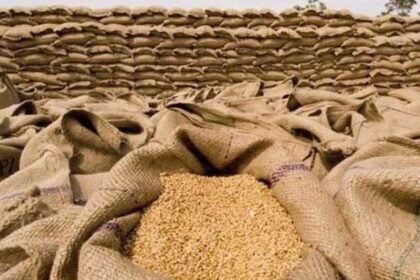Afghanistan (The COW News Digital )Afghanistan continues to be one of the world’s largest centers of opium production, according to the latest 2025 report released by the United Nations Office on Drugs and Crime (UNODC). Despite a slight reduction in the total area under opium cultivation compared to the previous year, the country still plays a major role in the global supply chain of illegal narcotics.
The UN report states that in 2025, approximately 10,200 hectares of land in Afghanistan were used for opium poppy cultivation. This reflects a 20% decline from the previous year. However, the report also notes that 2024 had seen a 19% rise in cultivation compared to 2023. Historical data in the report shows that opium cultivation covered 10,800 hectares in 2023, increased to 12,800 hectares in 2024, and then decreased again this year.
Certain provinces, including Zabul, Kunar, and Takhar, reportedly experienced a slight increase in cultivation activity this year. However, severe drought conditions caused substantial crop losses in other regions, affecting overall production levels.
According to UNODC estimates, 296 metric tons of opium were produced in Afghanistan in 2025, with the average market price recorded at $570 per kilogram. Analysts believe that the country’s reserves of previously harvested opium could continue to meet global demand until at least 2026.
The report also highlights a significant shift in the global drug market. While plant-based narcotics like opium historically dominated illegal trade routes, synthetic drugs are rapidly emerging as a more profitable model for criminal networks. Afghanistan, too, is witnessing a notable rise in the production of synthetic drugs such as methamphetamine, commonly known as “ice.”
The UN report attributes this increase to criminal organizations who view synthetic drug manufacturing as easier and more cost-effective compared to opium cultivation, which is vulnerable to climate conditions, law enforcement efforts, and agricultural losses.
Despite repeated restrictions and enforcement campaigns, Afghanistan remains among the top three opium-producing countries worldwide. Experts warn that unless broad international cooperation, economic alternatives for farmers, and sustained anti-trafficking strategies are implemented, both opium cultivation and synthetic drug production will likely continue.
UNODC reiterated that the ongoing situation poses severe social, economic, and public health challenges, both within Afghanistan and globally, where illegal narcotics fuel violence, addiction, and organized crime networks.








